KARNAK TEMPLE
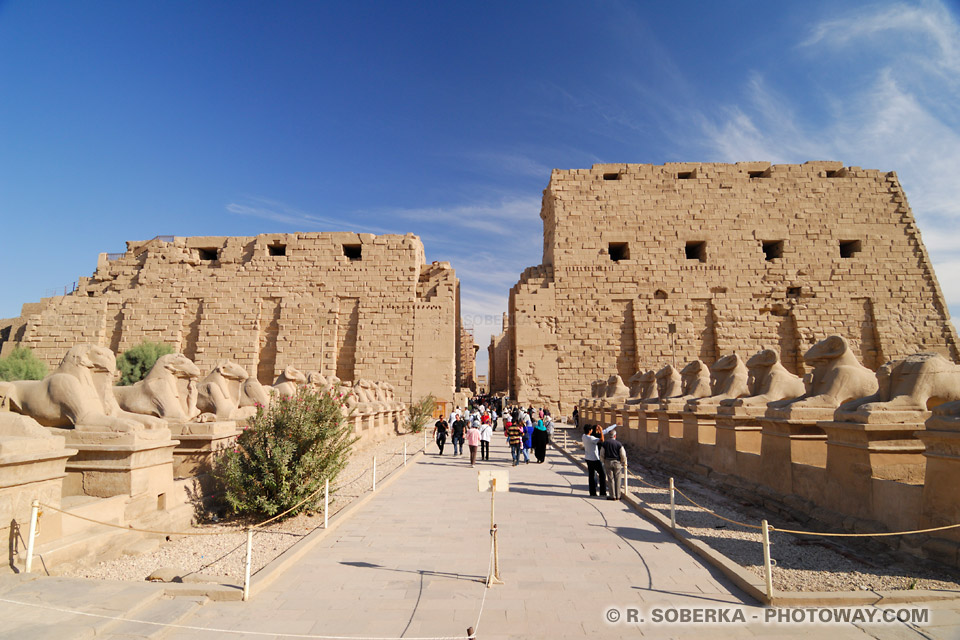
The Karnak temple is undoubtedly one of the most fabulous sites of ancient Egypt.
Like the Luxor temple, it is also dedicated to the god Amun.
Its construction, which began about 4,000 years ago during the Middle Kingdom, was completed 1,600 years later during the New Kingdom.
This is where the dromos from the Luxor temple ends.
Note: A dromos is a long ceremonial alley or avenue, often lined with statues, leading to the entrance of a temple or sacred site.
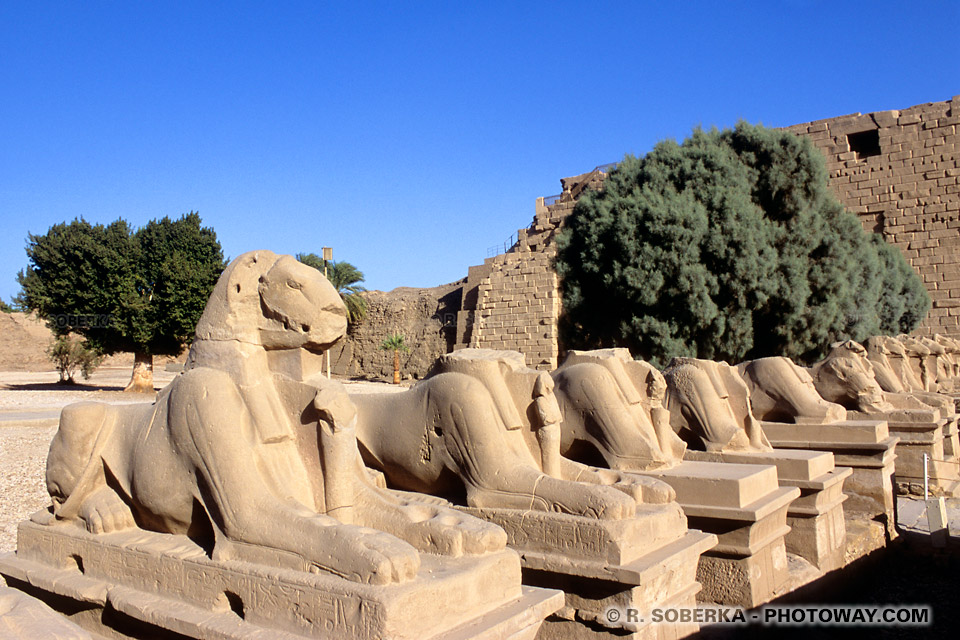
Here, the sphinxes still have their original ram heads, unlike those on the Luxor temple side, located at the beginning of the dromos.
Notice the small statues of Ramses II between the rams' legs.
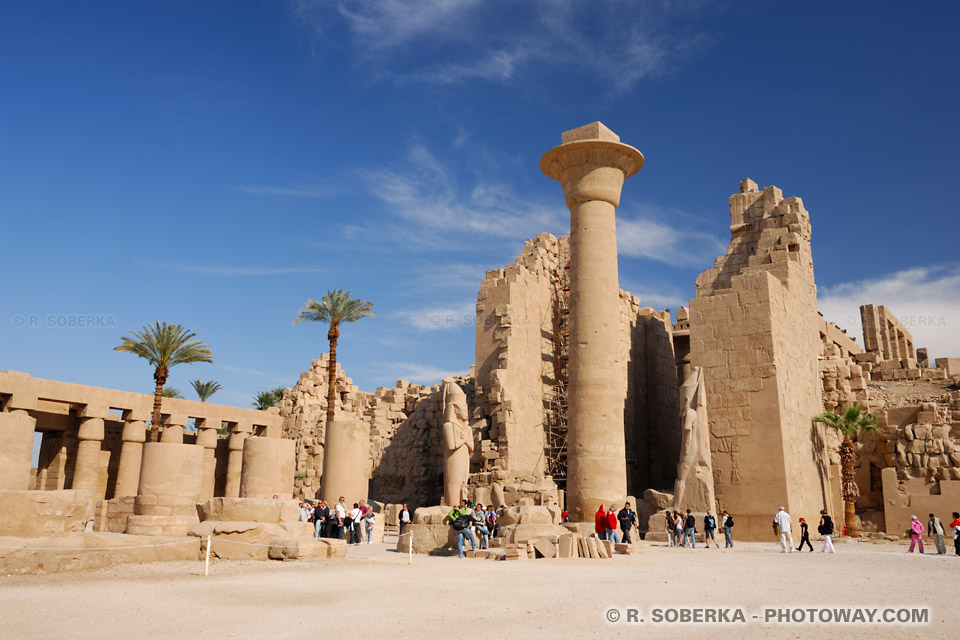
Let's enter: among all the temples in the Nile Valley, the temple of Amun houses the largest courtyard, simply called "the Great Court."
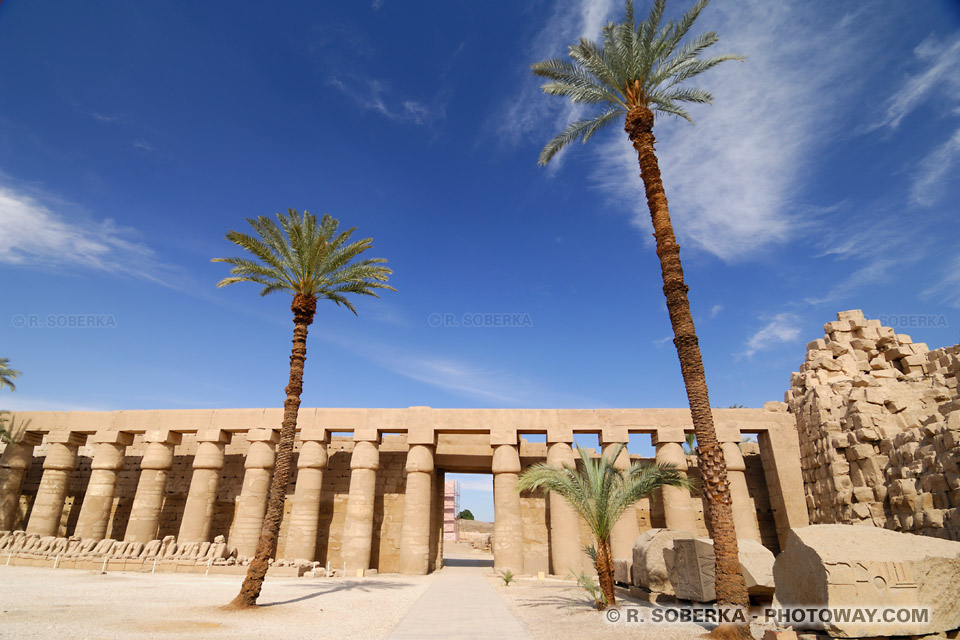
The Great Court is lined with numerous restored columns and adorned with a few palm trees.
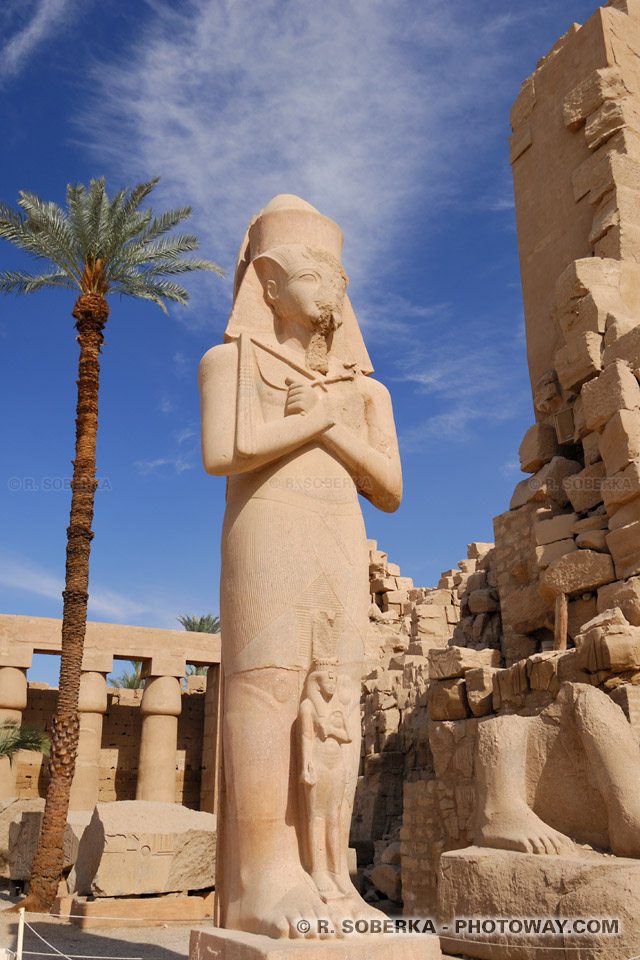
In the Great Court, there also stands a statue of Ramses II, with a statue of Bintanath, one of his daughters and later his wife, placed between his feet.
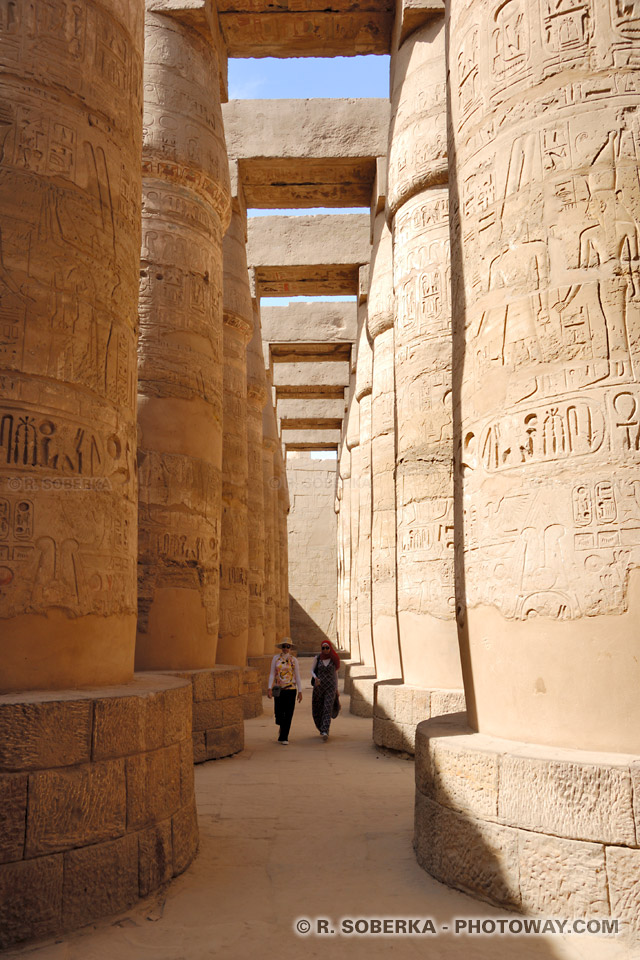
Let us venture deeper into the temple...
The Great Hypostyle Hall of the temple of Amun is one of the most impressive architectural marvels of ancient Egypt.
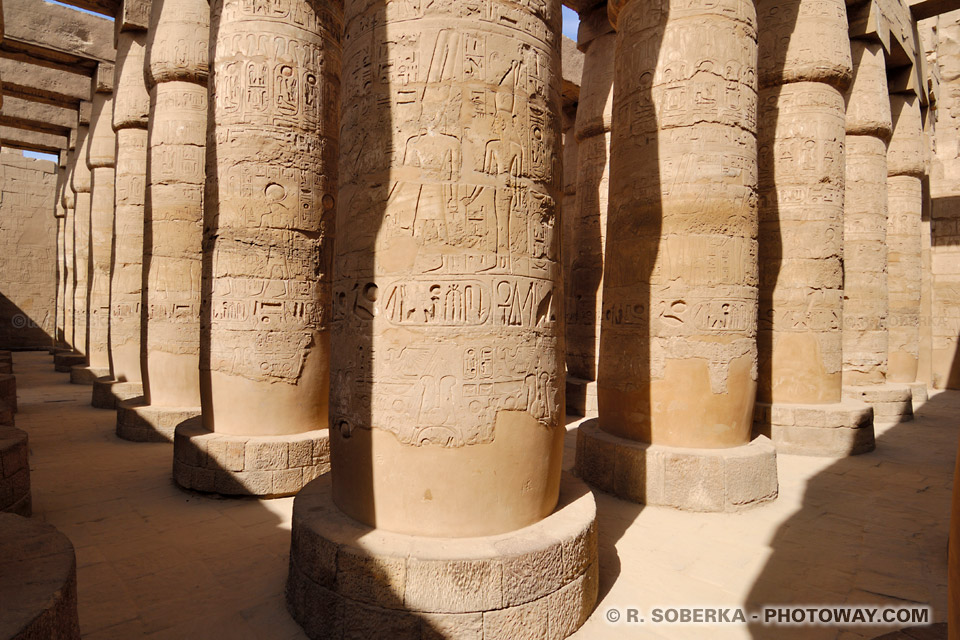
Covering an area of about 50,000 square feet (approximately 5,000 square meters), this vast hall is filled with 134 massive columns arranged in 16 rows.
The Great Hypostyle Hall was primarily constructed during the reigns of Seti I and Ramses II in the 19th Dynasty of the New Kingdom.
The detailed carvings and inscriptions on these columns and walls depict the pharaohs' military victories and religious rituals.
This hall served as a venue for grand ceremonies and processions, symbolizing the power and majesty of the pharaohs and the significance of the worship of the god Amun.
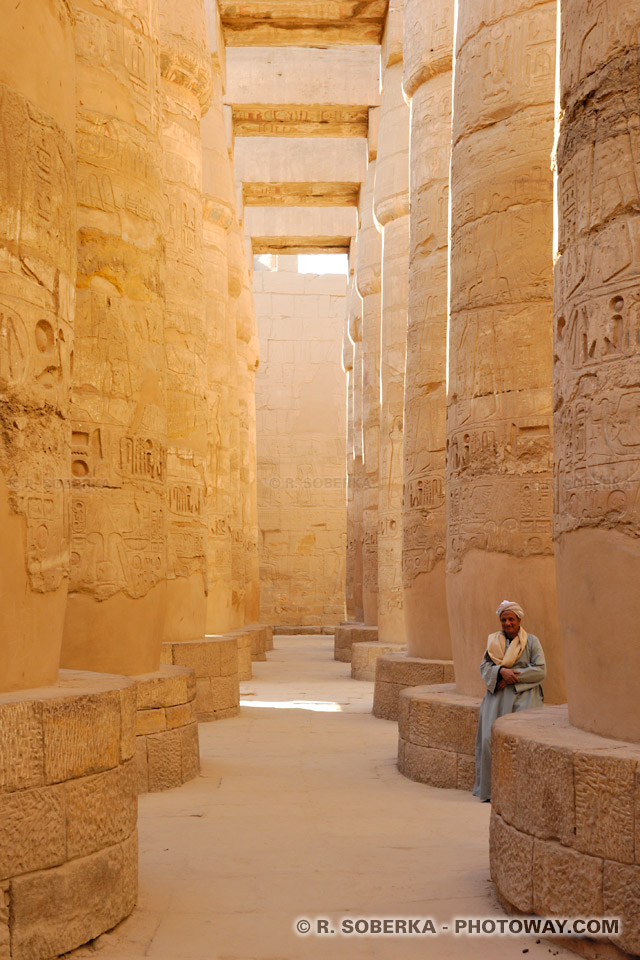
The central columns are 69 feet (21 meters) tall, with capitals shaped like papyrus.
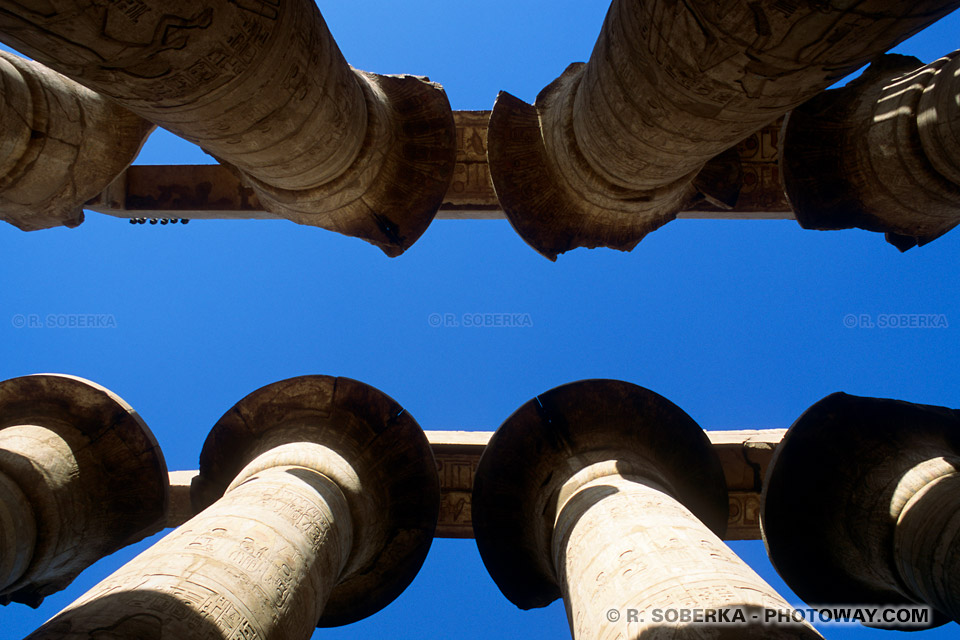
These columns once supported a ceiling that has now disappeared.
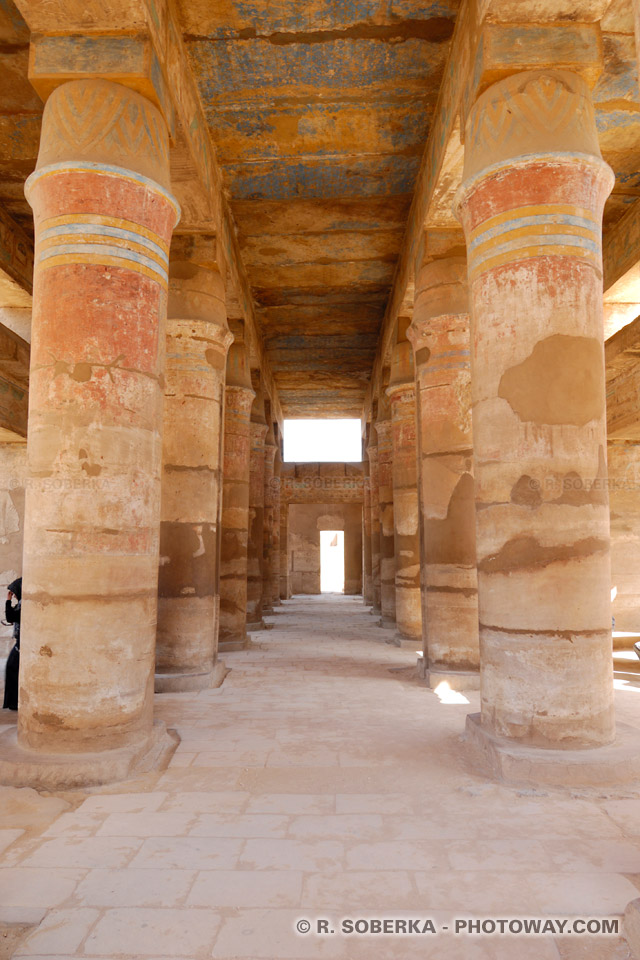
There are also smaller side columns that are about 40 feet (12 meters) tall, and these have retained their ceiling.
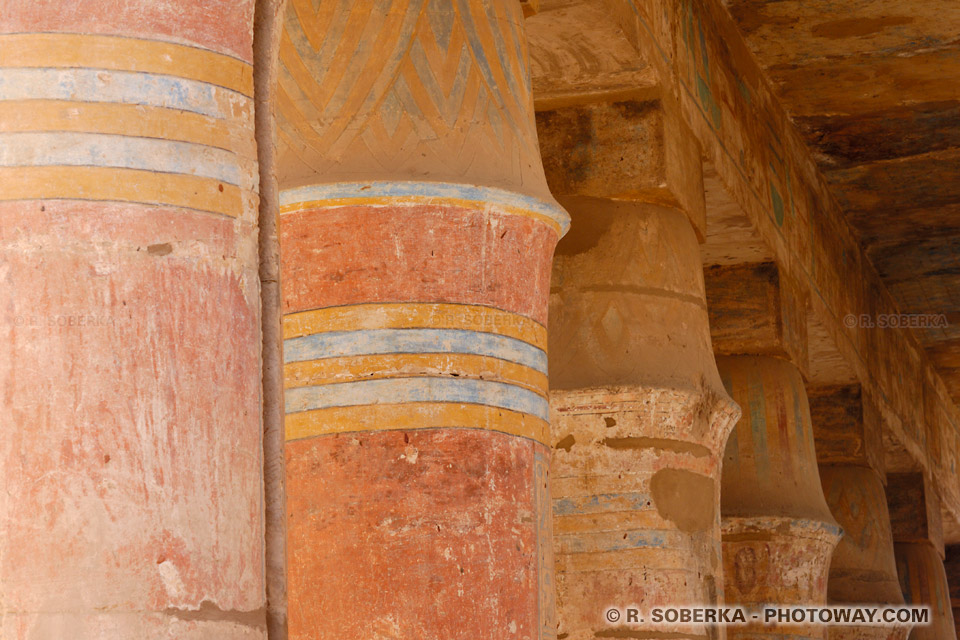
What is remarkable is that some of these columns have retained their original colors, which are several millennia old.
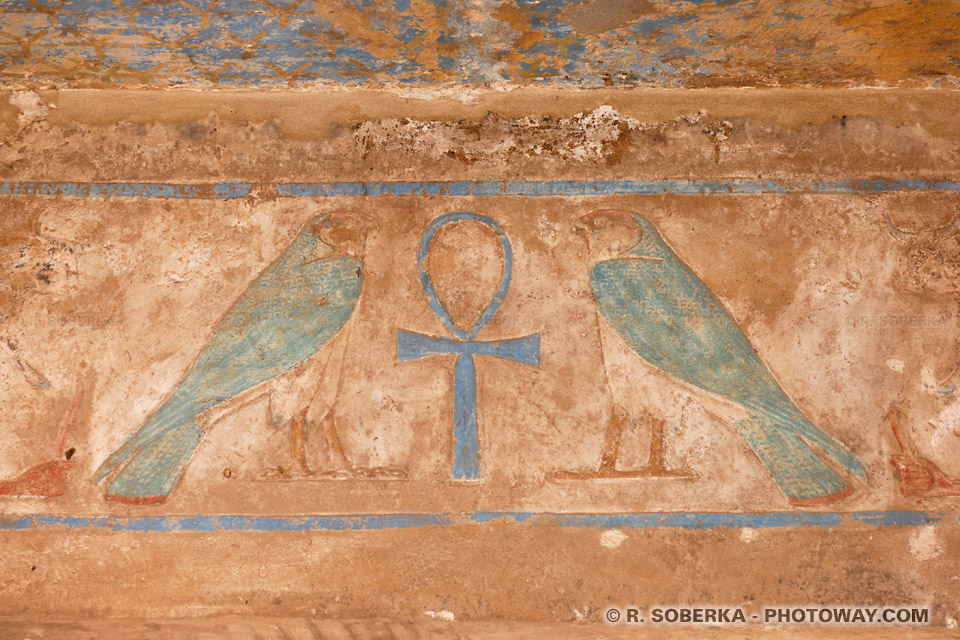
...and the ceiling, too, has preserved magnificent colorful paintings, still visible today.
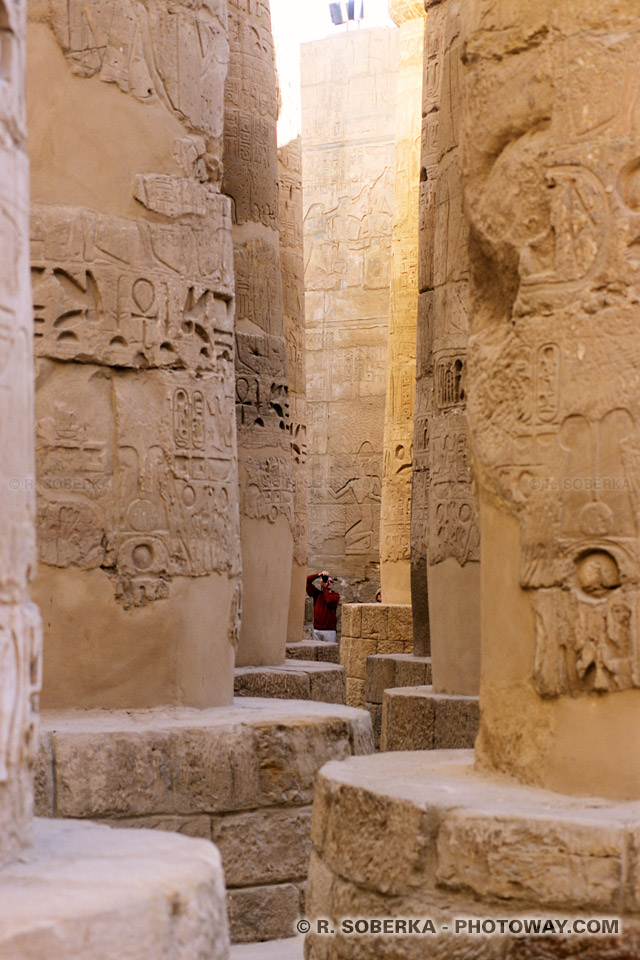
This hypostyle hall exudes a palpable mystical atmosphere, and its graphic qualities are a delight for any photographer.
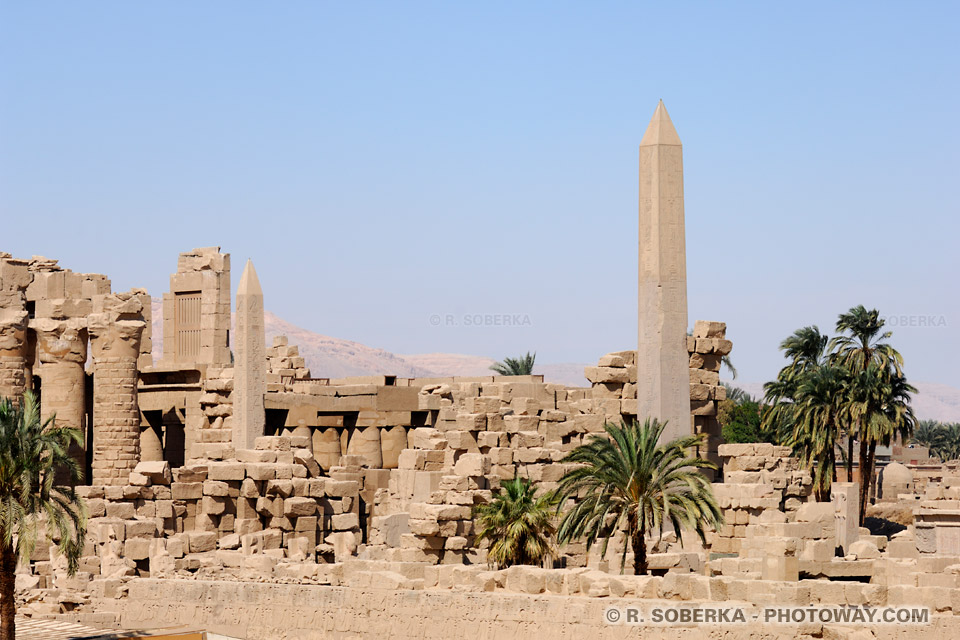
In the subsequent inner courtyards, two magnificent obelisks rise toward the sky, engraved with hieroglyphs honoring the gods and pharaohs.
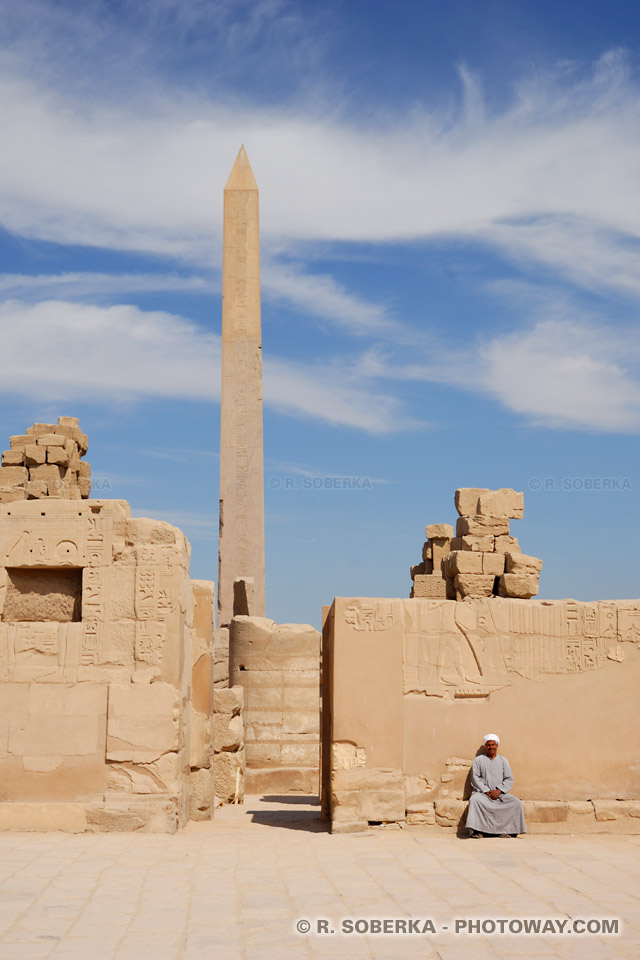
The tallest obelisk, erected by Queen Hatshepsut, still proudly stands at 94 feet (28.58 meters) tall and weighs nearly 343 US tons (311 metric tonnes)!
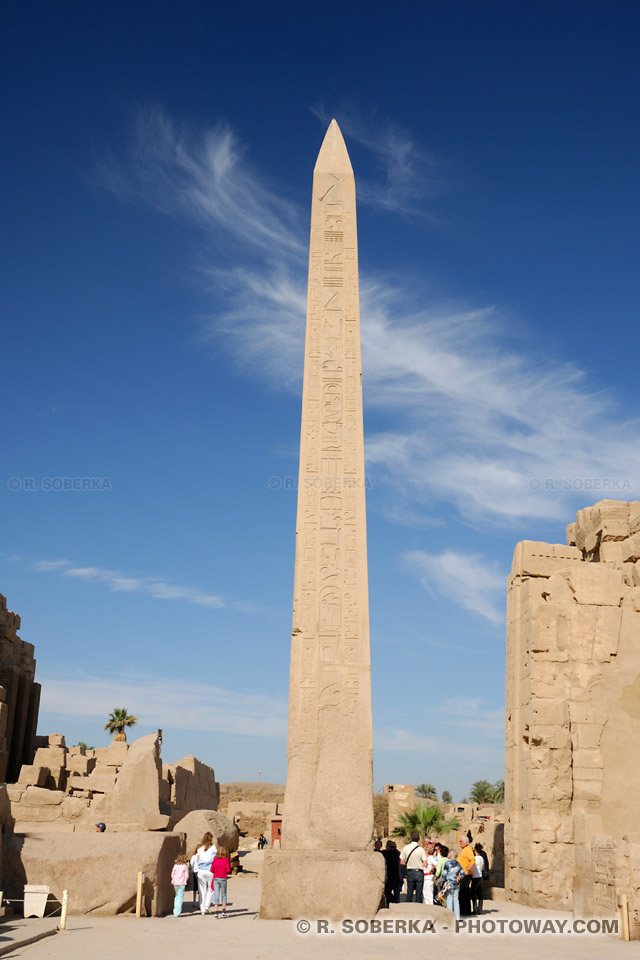
The second obelisk, erected by Thutmose I, though slightly smaller, is still impressive at 75 feet (23 meters) tall and weighing 157 US tons (143 metric tonnes)!
Its hieroglyphic inscriptions, engraved with incredible precision, celebrate the pharaoh's achievements and his devotion to the god Amun.
This obelisk is a remarkable feat of ancient engineering and craftsmanship, over 3,400 years old.
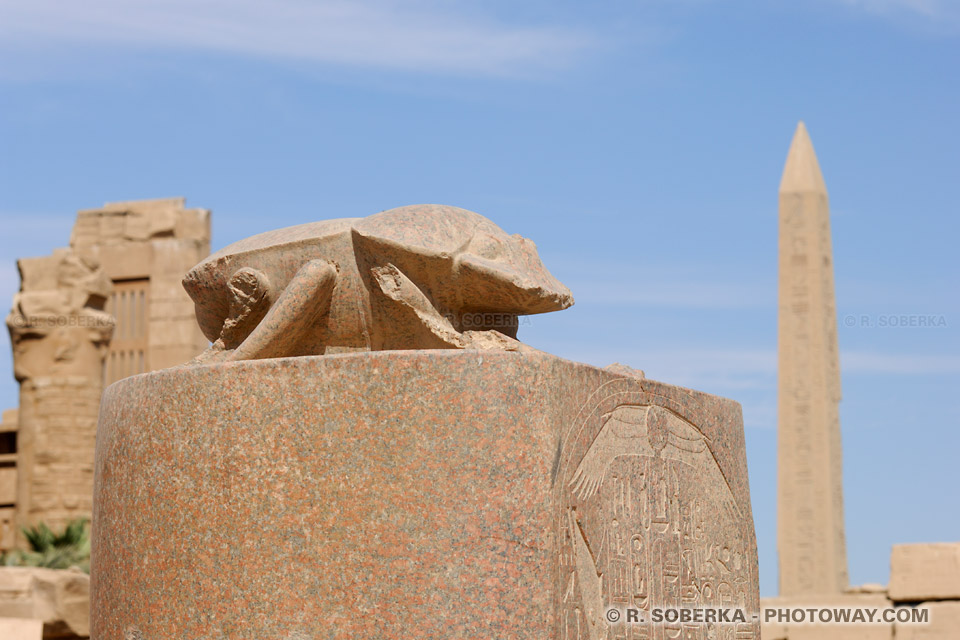
Not far from the obelisks, there is a peculiar scarab statue carved around the 15th century BCE.
Weighing several US tons and standing about 5 feet (1.5 meters) tall, this sacred scarab is dedicated to the god Khepri and associated with the rising sun.
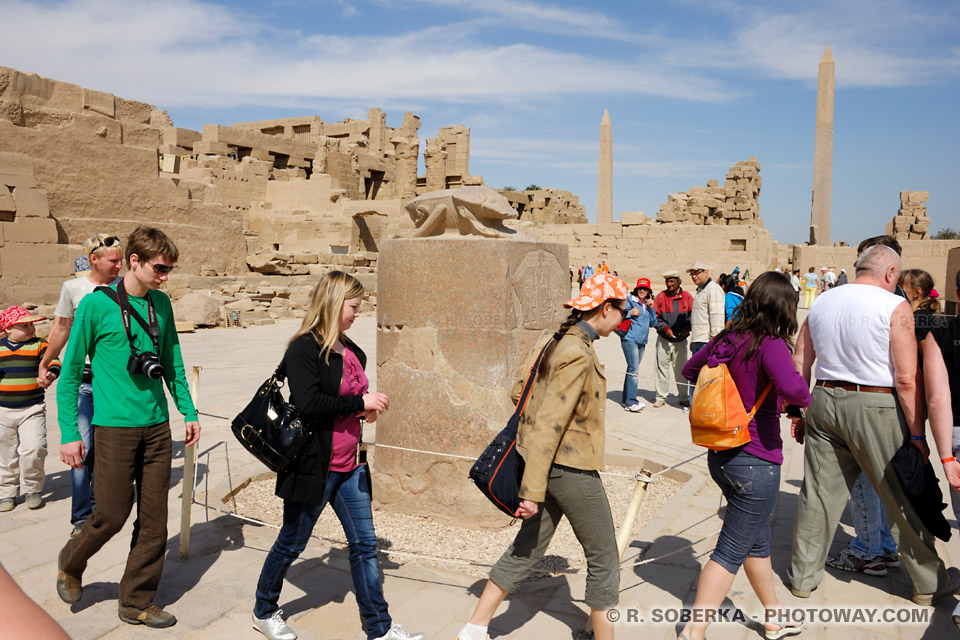
Tourists can often be seen circling around the scarab...
Explanation: By completing seven rotations, they hope to perform an ancient ritual believed to bring luck, blessings, and even the possibility of attracting a new romantic encounter!
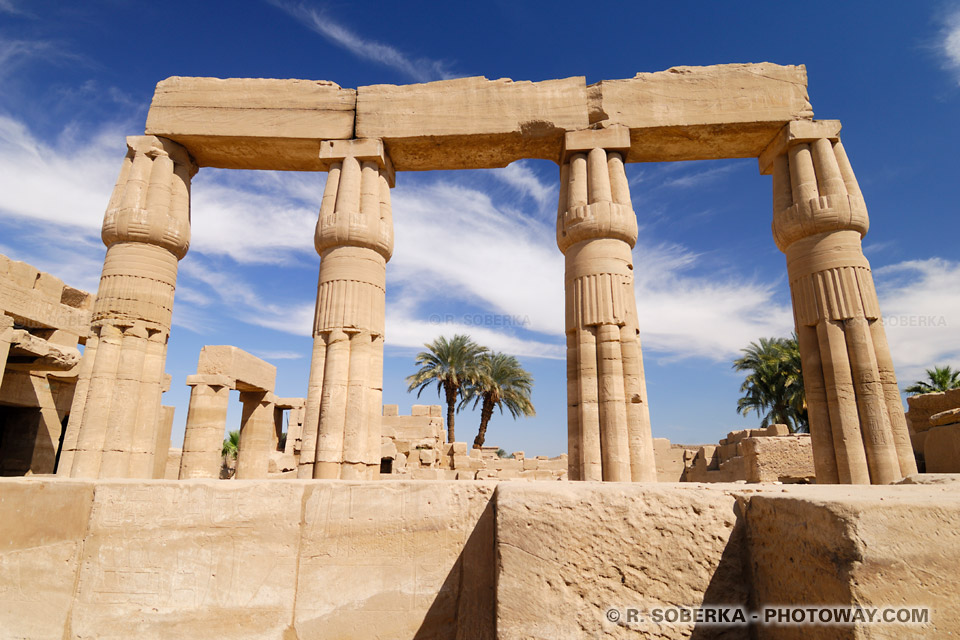
In the eastern chambers of the Karnak temple complex lies an area dedicated to Sokar, the god of the Underworld.
The remaining columns depict tales of rituals and the soul's journey into the afterlife.
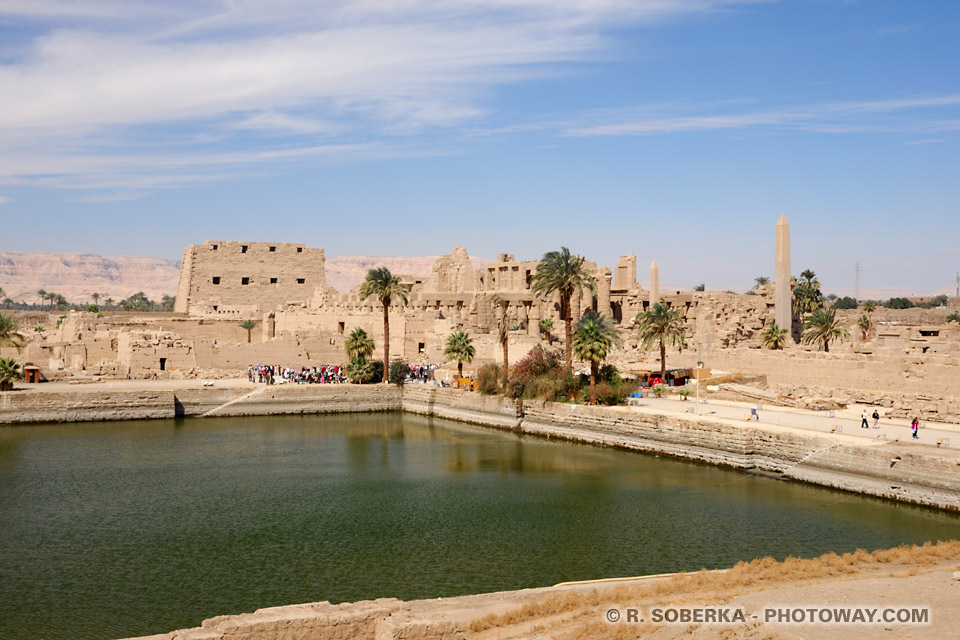
Finally, on the southern side of the Great Temple of Amun lies the Sacred Lake, a vast artificial body of water that once played a crucial role in ancient rituals.
Priests used this lake for purification ceremonies, and it was said to reflect the stars at night, creating a mystical connection between the sky and the earth.
Today, visitors can stroll around this serene spot and imagine the spiritual significance it held for the ancient Egyptians.
All photos of Karnak Temple © 2002 and 2010 by Richard Soberka